For my annual trip to Lofoten, I had the opportunity to shoot with the Fujifilm GFX 100. Prior to the trip, I had just a few weeks to get acquainted with the camera. Here are my thoughts on this 102-megapixel camera for landscape photography.
I am not unfamiliar with Fujifilm cameras. I have an old Fujifilm X100T for myself, as it's an easy camera to have with me. I also reviewed the X-Pro2, and although I love these cameras, I did not want to give up my Canon equipment.
I was tempted, though, when I got my hands on the GFX 50S and used it for over a month or so. The images produced by this medium format size sensor were superb. But for me, the camera wasn’t that comfortable to hold. And it lacked speed, which made it unsuitable for some kinds of photography. Concerning the GFX 50R, I didn't like it at all, and I found it to handle worse than the GFX 50S. I didn't spend much time with it.

The Fujifilm GFX 50S, a great camera with those amazing Fujifilm dials. Besides that, it has a terrible design, which is improved a great part with the new Fujifilm GFX 100.
I do love the physical dials of the Fujifilm cameras. The large shutter speed dial, the convenient exposure compensation dial, and the aperture ring on the lenses. After all the different cameras I have used, I still think this is one of the best decisions Fujifilm made. I know, it is a personal preference. Some of you may not like it at all.
My First Feelings About the Fujifilm GFX100
When I received the Fujifilm GFX 100, I truly missed the physical dials that I had grown accustomed to when shooting with this camera brand. This one is all about buttons and only a few small dials that are sticking out of the body. But, holding the camera felt good. It is well in balance, despite the size and weight. As a matter of fact, it is quite similar to the Canon EOS 1D X I owned for a couple of years or the Nikon D5.

The Fujifilm GFX 100 looks rather impressive. Its design, size, and weight are comparable to the Nikon D5 and Canon EOS 1D X.
In the first few weeks, I customized the camera to my own needs. I did a few shoots and fine-tuned the settings as needed. Besides the camera itself, I choose the GF23mm f/4 lens, the GF63mm f/2.8 lens, and the huge GF 250mm f/4 lens. These would be my companions on the trip to Lofoten. With these three lenses, and the 102 MP sensor, I could crop where needed without losing too much resolution.

This is the set I took with me on my Winter at Lofoten trip. I had a wide angle lens, a standard lens, and a tele lens. It was more than enough for my needs. A longer focal length could be reached by cropping. With the 102 MP resolution, that was no problem whatsoever.
I had a few issues with the buttons and dials. I found the dials to be too small and flimsy, especially the dial on the back, which I used for the ISO setting. This dial can also be pressed, and it happened too often while changing the ISO value. Because the dial is so small, I used too much pressure while rotating it, pressing the dial by mistake and thus activating another feature.
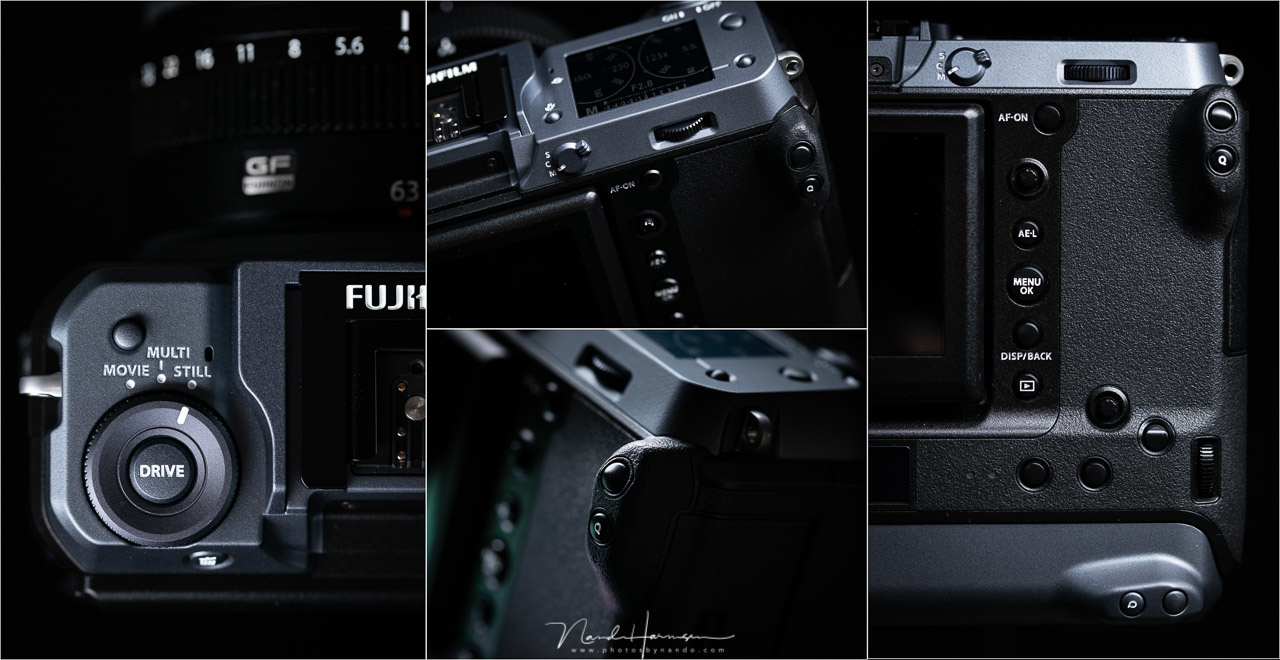
Although the camera is great, Fufifilm could improve a lot concerning buttons and dials. I think this is the biggest weakness of this camera.
Another issue that happened to me quite often was pressing the Q button by mistake. It is located on the thumb grip, which is a terrible location for me. There should be no button on that grip at all. Many times, prior to the trip to Lofoten, and even more often when using the camera on tripod, I noticed an unwanted change in setting on the Q menu, because I had accidentally pressed that Q button again.
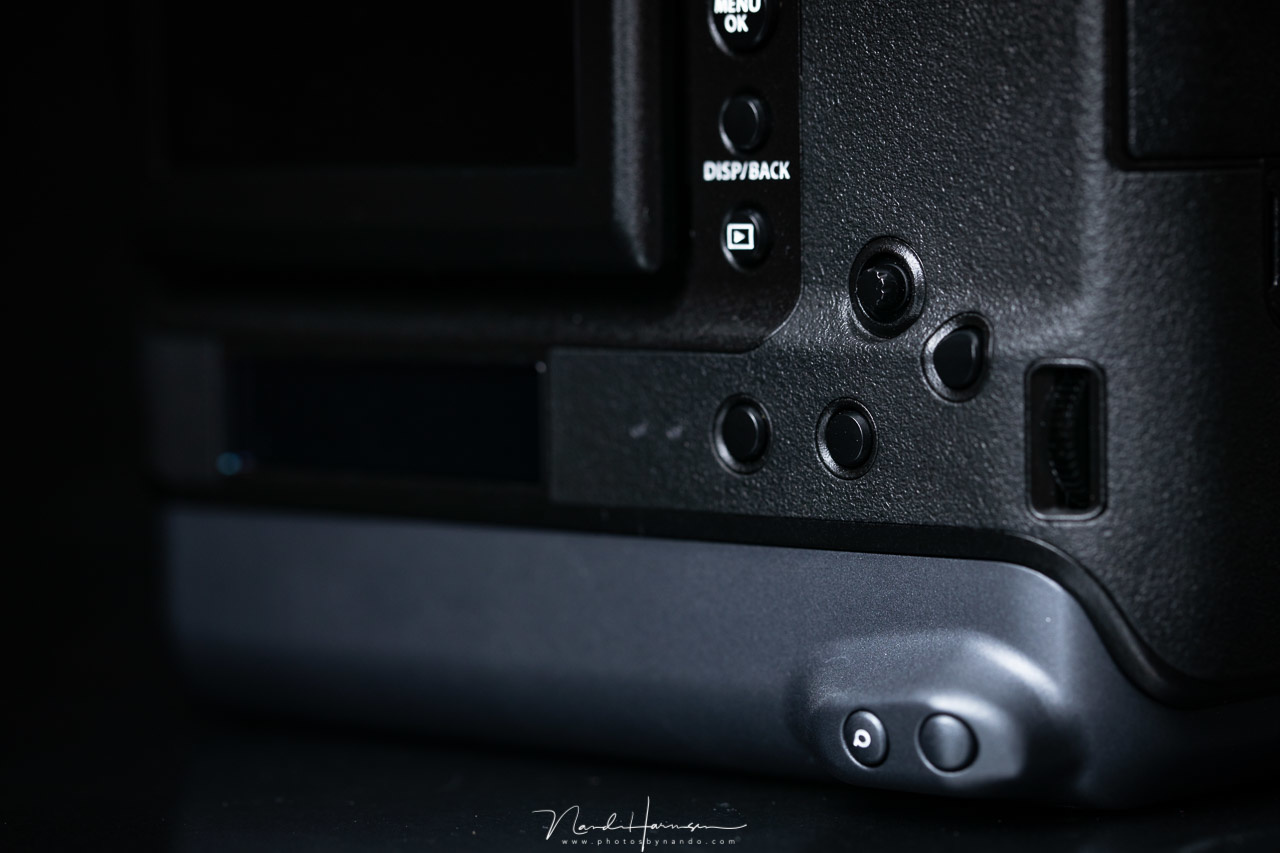
Why didn't they place a nice rubber lining on the vertical grip? It's slippery and cold. It has a nice look this way, but I would rather see it functional.
The Fujifilm GFX 100 has a built-in vertical grip, making it easier for shooting in portrait orientation. On any other camera with a built-in vertical grip, the main controls are duplicated, so you can use the controls in the same way regardless the orientation of the camera. Except for the Fujifilm GFX 100, where strangely enough, the location of the buttons is different between the vertical orientation and the horizontal orientation. Although it is a matter of getting used to, it is not the ideal situation.

The button layout for the vertical and horizontal grip is not the same. I wonder why.
Shooting in Winter Conditions at Lofoten
During our trip to Lofoten we had some challenging weather conditions. There were clear skies, snowstorms, and rain showers. We had some fierce winds from a polar low, making it almost impossible to shoot at some beaches at Lofoten. It was fun all the same, while keeping safety at first.

Shooting at Lofoten in harsh winter situations. It was fun, it was amazing, and I loved using the Fujifilm GFX 100. Still, I found a lot of things that could be improved, I think. (photos made by Annette)
I found the Fujfilm GFX 100 to be a great camera to use. The size made it easy to shoot with gloves on, and despite the weight and size, I had no issues using it for hours and hours. The camera is powered by two batteries in the vertical grip, which allowed me to shoot for a day and a half without problems. The in-body stabilization does wonders, and I don’t think it would be possible to shoot as easily without a tripod and still have sharp images. Remember, 102 MP is not that forgiving concerning camera movement and camera shake.
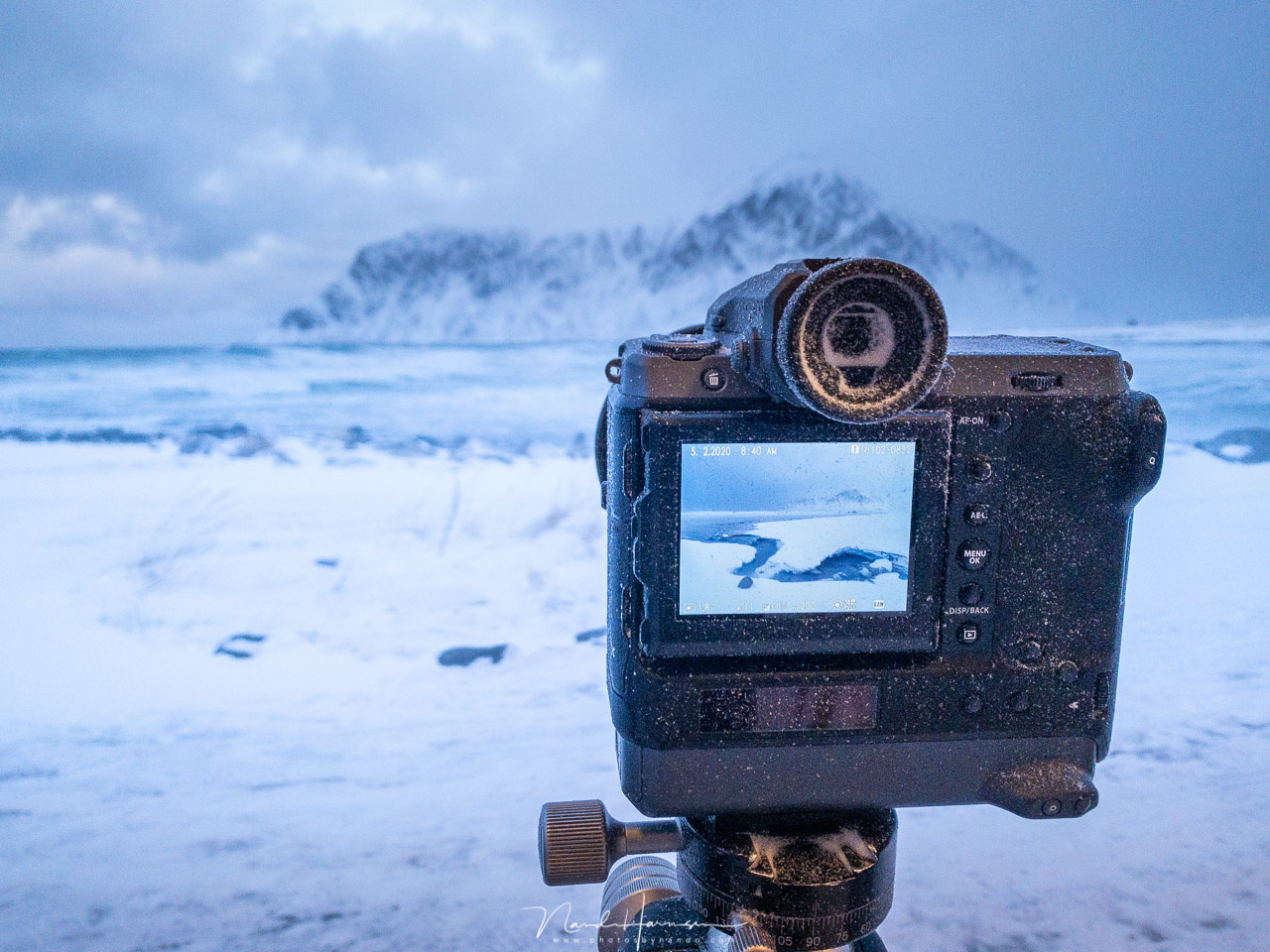
Snowstorms and rain showers had no effect on the performance of the Fujifilm GFX 100. It kept on working perfectly. The batteries kept on going strong, even with the low temperatures.
The camera is equipped with three screens. One is a square monochrome LCD screen on top, with three views to choose from. There is a graphic illustration of physical dials, a standard information screen with all the settings, and a histogram. The second screen is the well-known color LCD screen on the back that also incorporates some touchscreen functionalities. And, there is a narrow monochrome OLED screen on the bottom that can be configured to your liking. I had it set to a real-time rendered histogram, which I found very convenient. I still don't know why Fujfilm choose to have three different screen types on one camera.
As mentioned, I wasn’t fond of the buttons and dials. Some of the buttons are too easy to press accidentally, while others do not stick out enough, making them hard to find when having the eye against the EVF. The joystick is very small, just like the dials on the front and back of the camera. Using these is not comfortable, and too often, these get pressed by accident when trying to rotate the dial, especially when wearing gloves.

When shooting from a tripod, I often pushed the Q button by accident, activating functions that I did not want. And, I missed my L-bracket a lot. The tilt screen works amazingly in these situations.
Another issue I learned along the way was the lack of grip when holding the camera in vertical orientation. For aesthetic reasons, Fujifilm decided to have no rubber lining on the grip. I had to hold the camera in vertical orientation very firmly if I was wearing gloves. And I needed the gloves very much, because under freezing conditions, the bare metal of the vertical grip becomes very cold.
The Results of the Fujifilm GFX100
Although I never had any idea why I would need 102 MP, I did like the flexibility it gave me. It was very easy using three primes, and still have enough room for cropping the image without a lot of resolution loss. With the GF 250mm lens, which has about the same angle of view as a 200mm on a full frame sensor, I had no trouble cropping up to a 400mm full frame equivalent angle of view.
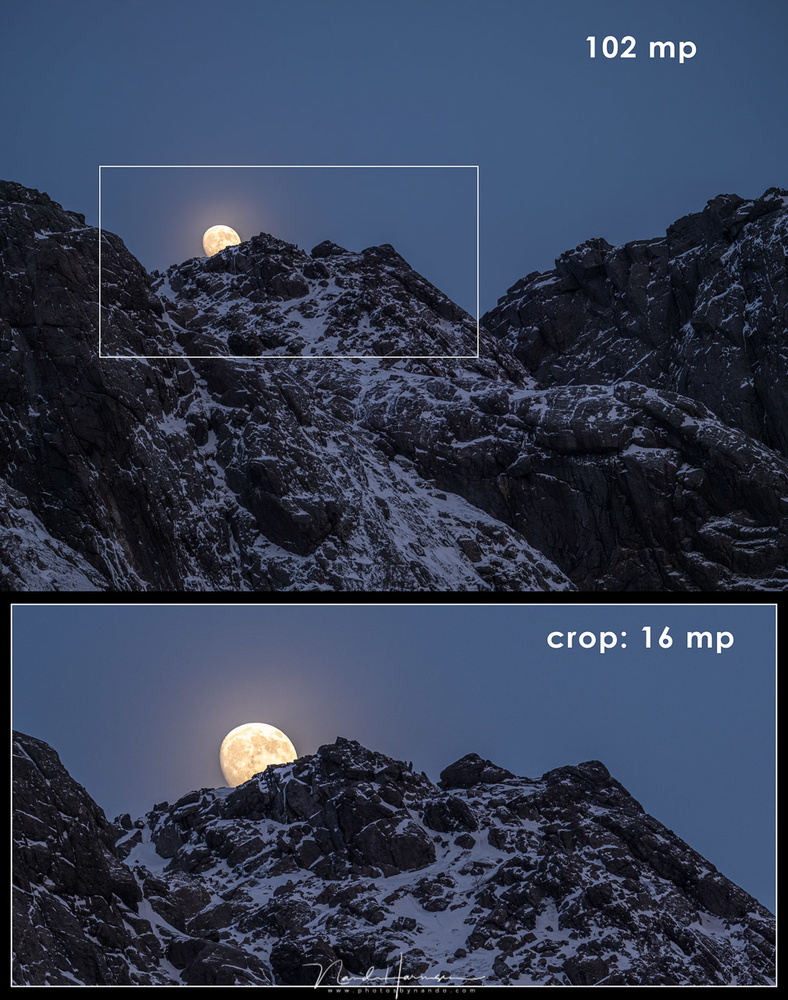
Cropping is no problem whatsoever. The amount of detail makes it possible to cut out a small part of the image. You don't need to go as far as in my example, of course.
I did not have any complains concerning the quality of the images. The amount of detail is amazing, although you won’t see that when using these images for normal use. The dynamic range is amazing, as expected. Still, you have to be careful not to correct the shadows too much. An extreme correction will cause some nasty banding. But if you expose your images correctly, you won’t be running into this issue often.
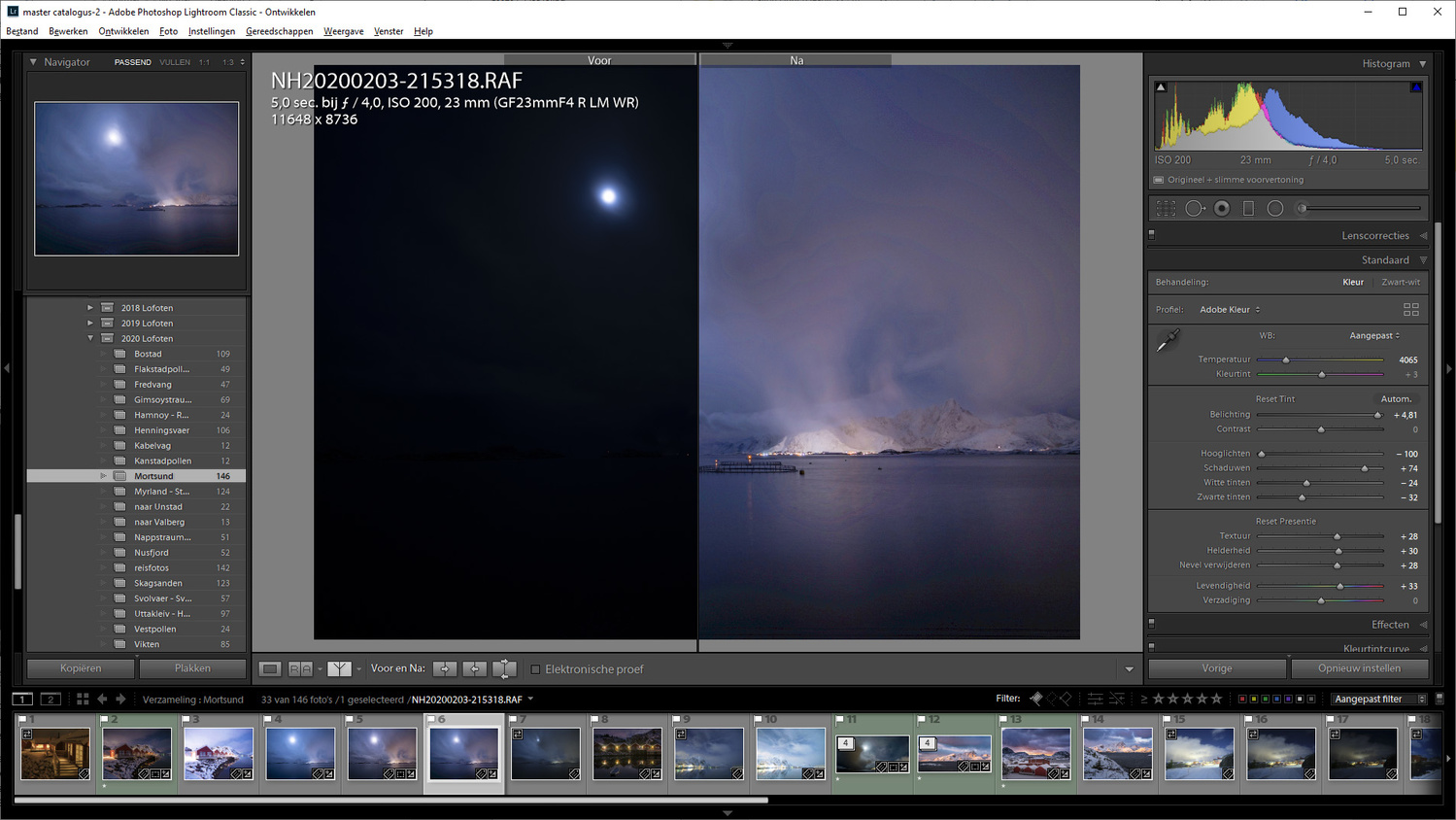
Although the dynamic range is very large, you can run into some banding when reaching the limits. This can be avoided easily by a proper exposure. Also use bracketing, of course.
My Feelings About the Fujifilm GFX100 After a Month of Shooting
I have some mixed feelings about this camera. First of all, I really liked photographing with this camera. It is a great machine, and I like the design a lot, although it lacks physical dials. The results are great, and the 102 MP give a lot of room for cropping. I found the three primes to be a great choice.
On the other hand, I have some issues concerning the layout of dials, buttons, and the way these are designed. I think Fujifilm can make a great improvement with these things. The camera is user friendly, and you can customize everything to your liking, but if Fujifilm would improve on the dials and buttons, it would be a perfect camera, I think.

A nice tilt screen is very handy. But be carefull not to tilt it in front of the eye sensor, or the screen will switch to the EVF. Too bad the screen has limited touch functionality.

An overview of the connections, card slots, and battery compartment, just to have an idea how everything looks.
What I Liked
- Wonderful design (very personal)
- Feels not large and heavy
- In-Body stabilization with 5.5 EV of stabilization
- EVF with very high resolution
- EVF is removable
- Three screens for all the information you need
- Vertical grip
- Very high resolution
- High dynamic range
- Two card slots for SD
- Autofocus reasonably fast
- Eye AF and face AF
- Very customizable
- Articulated touchscreen
- Good battery capacity
- Weather-sealing
- Shutter speed can be set up to 60 minutes
What I Didn’t Like
- Thumb grip is not that great
- Buttons on the thumb grip
- Buttons are not that great concerning design and feel
- Joystick and dials are too small and flimsy
- Vertical grip is too narrow, has no rubber lining
- Different button layout between vertical and horizontal orientation
- Touchscreen functionality is very limited
- Banding can occur when the limits of the dynamic range are reached
Gallery
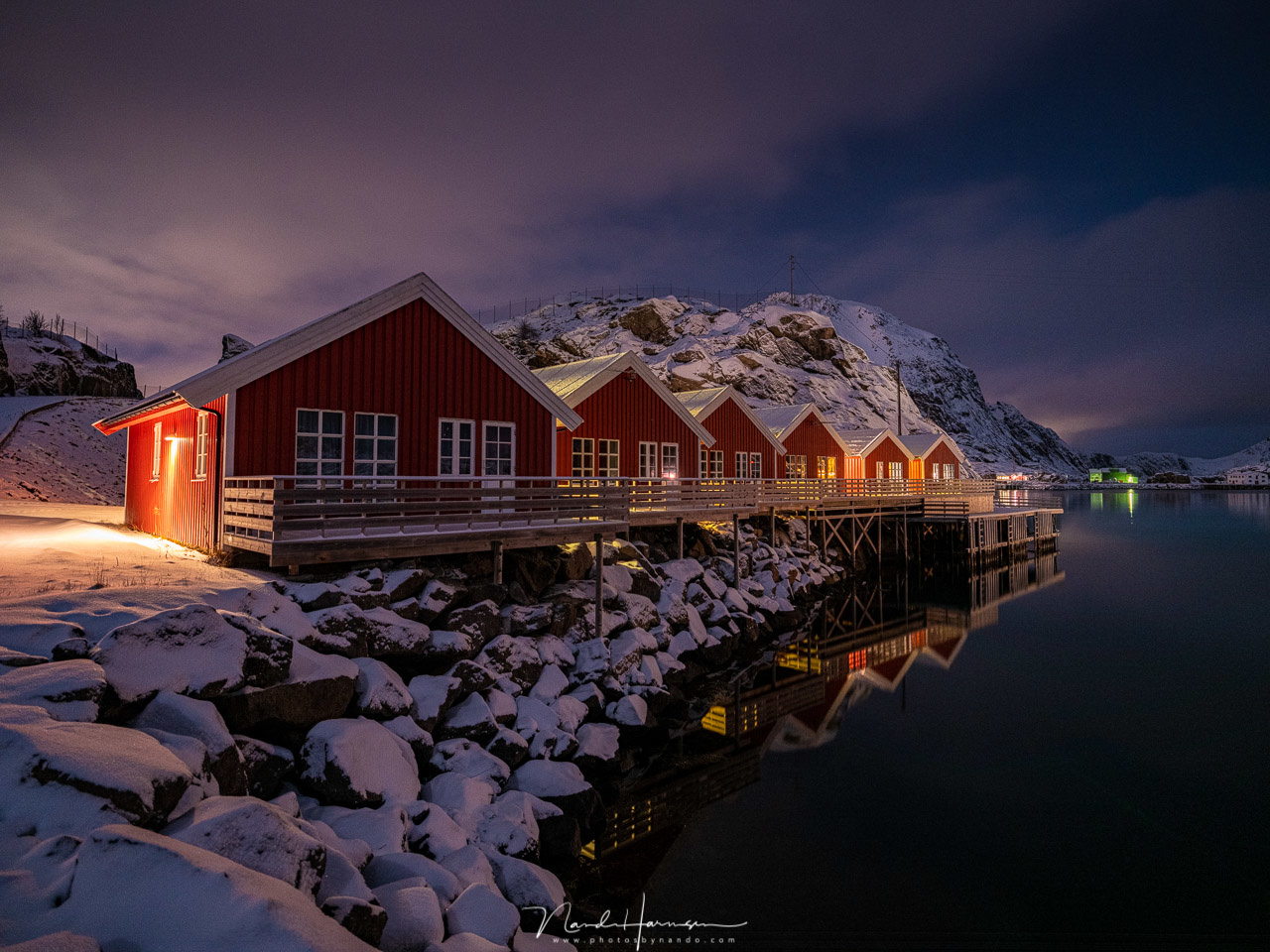
The rorbuer of Mortsund at night. (23mm, ISO 1,600, f/4, 4 s, Lonely Speck Pure Night filter, from tripod)

The winds of the polar low over Haukland beach. (250mm, ISO 200, f/5.6, 1/500 s, Haida CPL, handheld)
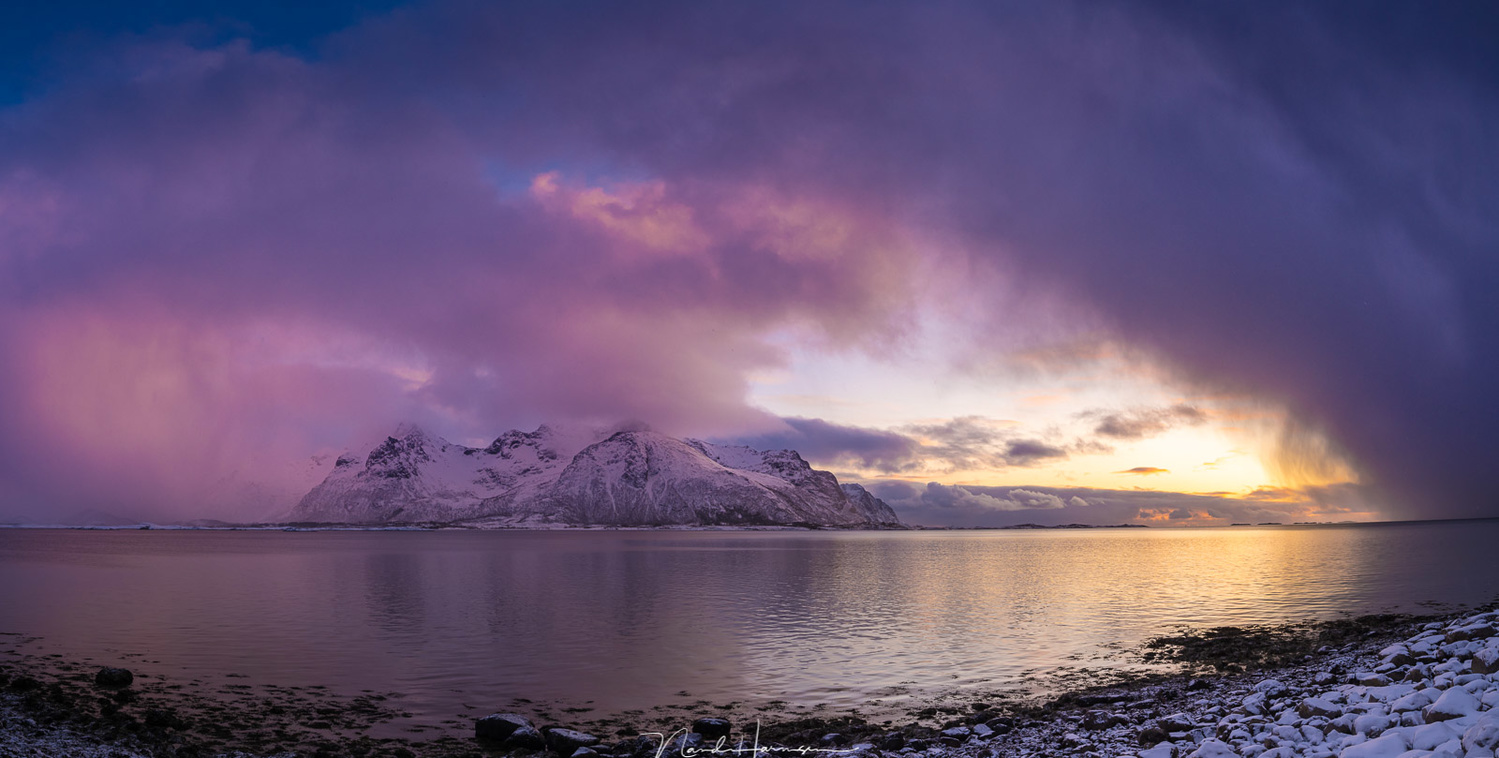
Clouds of the polar low at sunset. (panorama from three 23mm shots, ISO 320, f/8, 1/125 s, handheld)
Is This a Good Camera for Landscape Photography?
This is the question I asked myself, and I think the answer is yes. It is mainly because of the resolution and dynamic range of course. On the other hand, this amount of resolution takes a large toll on the memory being used and your computer, of course. For many photographers, this resolution may never be needed. It is not a camera to buy without thought, because it is quite expensive. A set like I used at Lofoten is almost $20,000.
But if you need this amount of resolution, and you have the money, it is a good investment. I think Fujifilm has made an amazing camera.
What do you think of this camera? Would you consider buying it for your photography? Please let me know in the comments below.

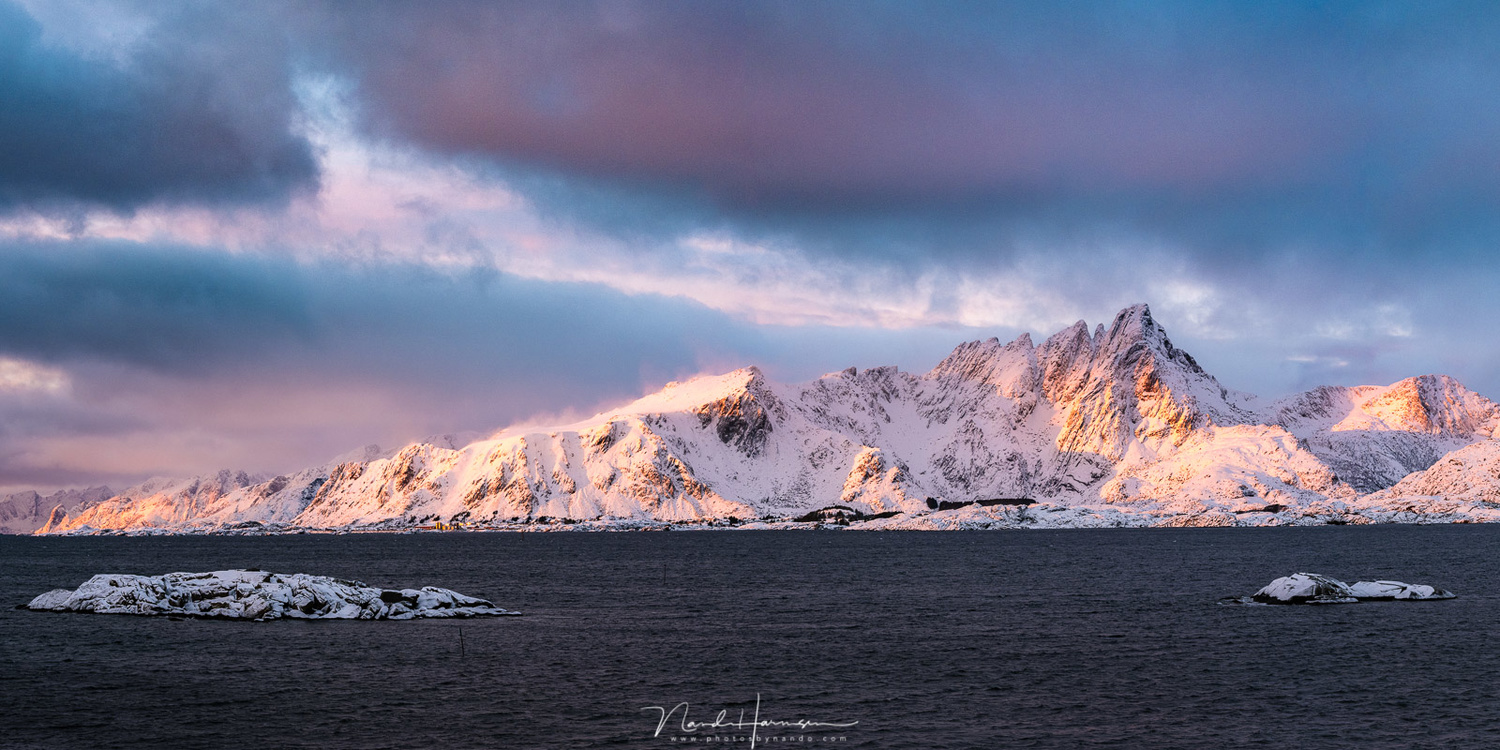



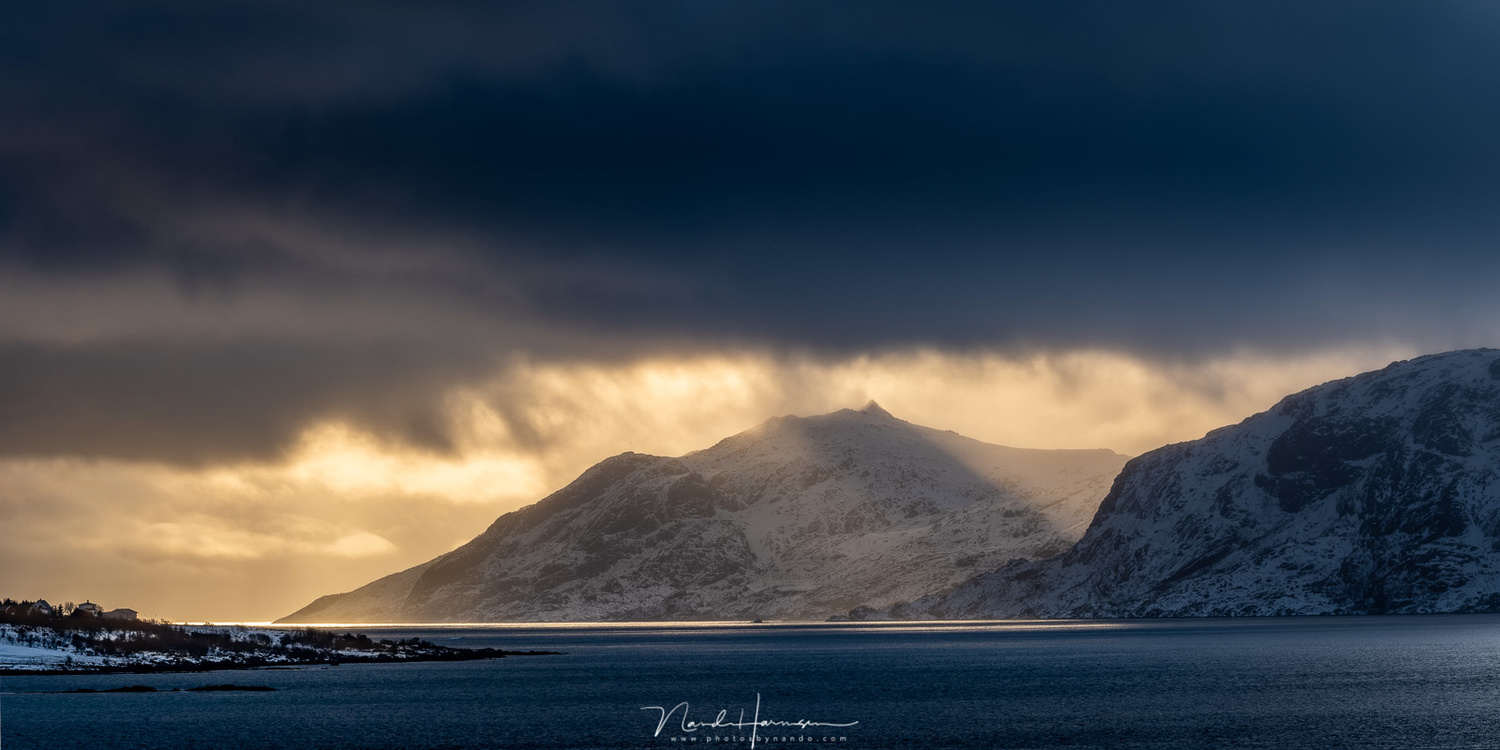

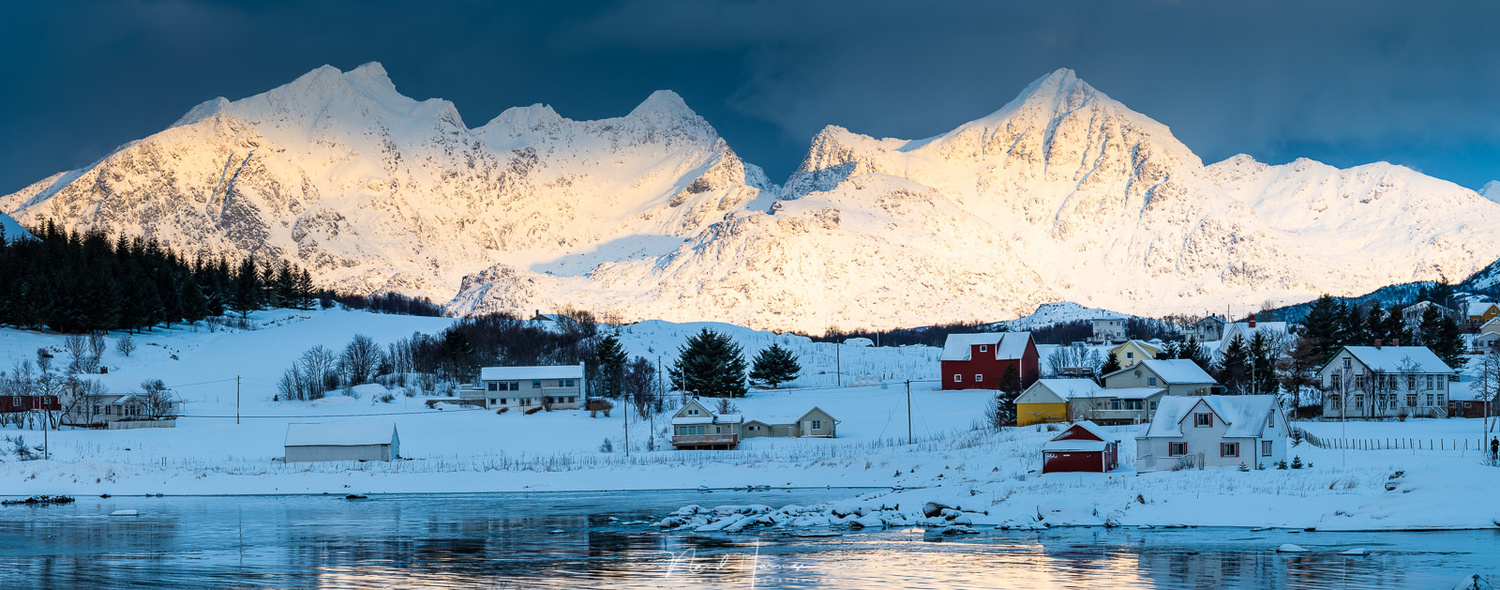
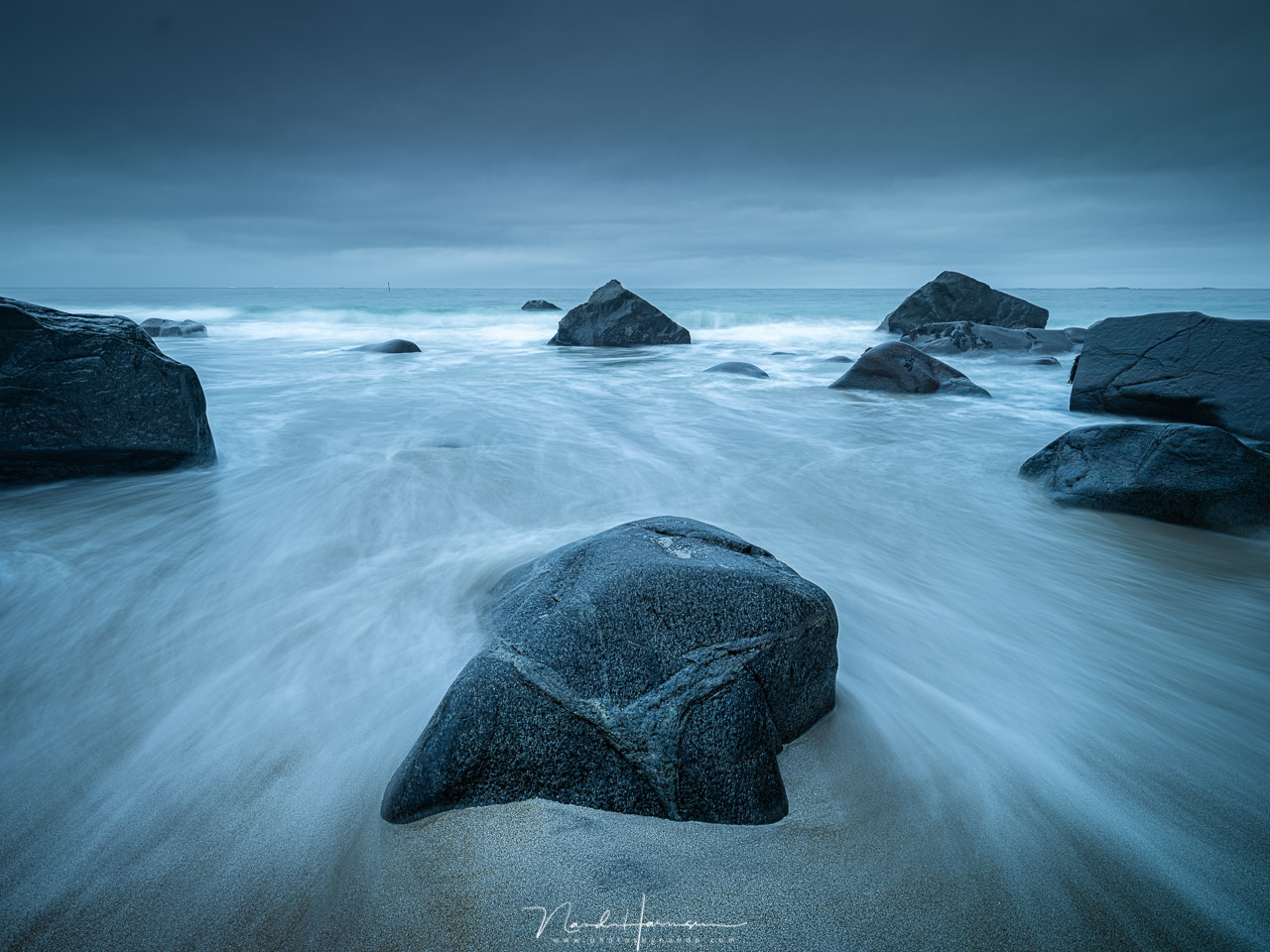
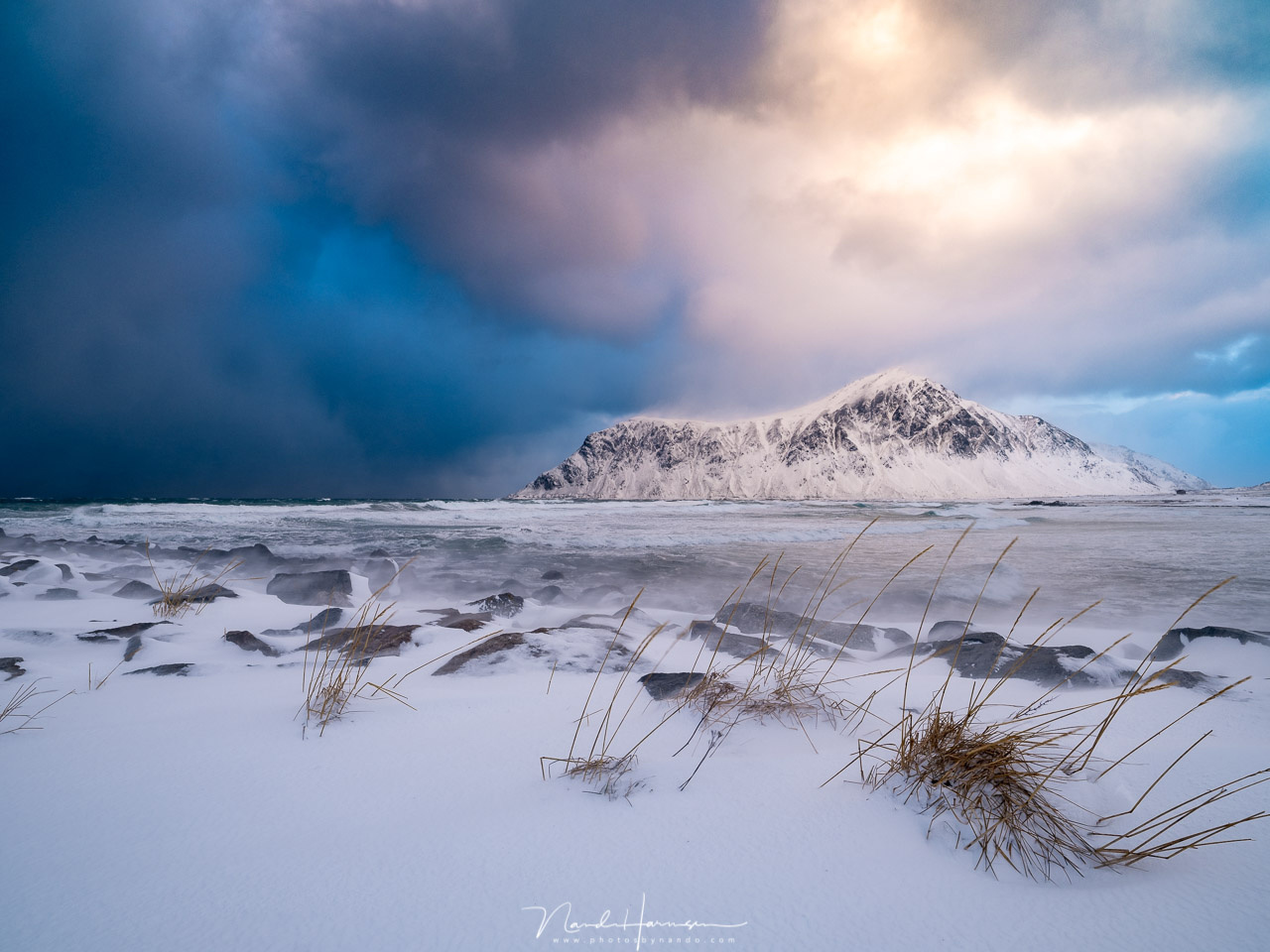






fantastic work!, way to brave the cold. what tripod and head did you use I love the metal dials?
I concur! Great photography. He's using Really Right Stuff BH55 double pan ball head for sure. Same thing I use and absolutely love. Even has the RRS leveling base. Not sure what the legs are though
It's Gitzo but not sure what model it is. At least a 3 series I guess.
I have the BH55 as well and removed the panning clamp which although is recommended for panos, will always translate to you having to frame your shot with the horizon cut in half. With his levelling base, there is actually not much need for the panning clamp at all. And its heavy!
"having to frame your shot with the horizon cut in half"
Can you explain it further, please? Thank you
I also wonder why a panning clamp would cut your images in half?
And I wonder, if you removed the panning clamp, why did you buy the version with panning clamp in the first place?
I use a Gitzo Systematic series 3 tripod, with the Really Right Stuff BH55 and a panning clamp.
Hi Dinos, Nando,
A panning clamp really does make quick panos but at the expense of having your horizon smacked right in the middle of the frame. If you decide to till up or down a little, you are actually panning at a slanted angle and it gets worse as you pan (with the panning clamp). The result will be something that is almost unusable. It works in a pinch if you do not have a levelling base but with a levelling base and having levelled it, I can tilt up or down and as long as my horizon axis is straight, my panos will work.
Therefore, for a panning clamp to work, it has to be perfectly level all both the X and Y axis which will then rendered your horizons as right in the middle of your frame.
I am not sure whether my language is proficient enough to explain it here so please clarify if need to. :)
BTW, awesome images here Nando!
Ah yes, You are absolutely right. With a panning clamp you will always have the horizon in the middle.
But there is always the possibility to crop the image the way you want to, and avoid having the horizon in the middel. Using the panning of the tripodhead itself has a benefit of course.
For my real estate photography the panning clamp makes it easier rotating the camera. It's personal. :)
Real estate photography will make sense since you need the verticals to be straight up too. :)
Got it, thank you...
No prob!
Now that's some nice work! Nicely done. I hope you're going to print a couple of those, maybe 20X30?
I am not planning to print any pictures yet. The walls in my home can only fit a limited amount of images ;)
I made the switch to Fuji from Nikon, a few years ago. One of the major reasons was how connected I felt to the cameras because of their physical knobs to control the major exposure factors. For that reason I was disappointed by the change with the GFX 100. I agree with Nando's comments about the various buttons. But I make photographs for the images, which I love to print large, and the images from the GFX 100 are by far the best I've seen from any digital camera. (I have not seen images from the Phase One IQ4 150MP back but for many reasons, not the least of which is cost, this just isn't a realistic option until I win the lottery) I will be interested is seeing what pixel shift and a 400MP image will look like. I believe this is coming in a firmware update. For a medium format system, Fuji has made something very usable, at a reasonable cost, that produces amazing images. Like the ones in this story!
I think the Phase One cameras are not reaslly practical, although some may disagree. Those cameras are too large for travelling like this, I think. THe GFX 100 comes in a good size package.
I wonder if the 400mp pixel shift adds a lot to this camera. I mean, 400mp is a LOT... ;)
Excellent article and amazing pictures. I have one question; how do you protect your fingers during extrem cold (I am talking about anything above -10 and up to -30 situations)?
Thank Rhonald,
Just wear gloves. :)
The temperatures at Lofoten were not below minus 4 degrees.
Nice work, thanks for sharing! I am lucky enough to own a GFX-100 as well, great camera and sweet licenses. I have been using it for landscape among other applications, and it works well!
You are lucky indeed. :)